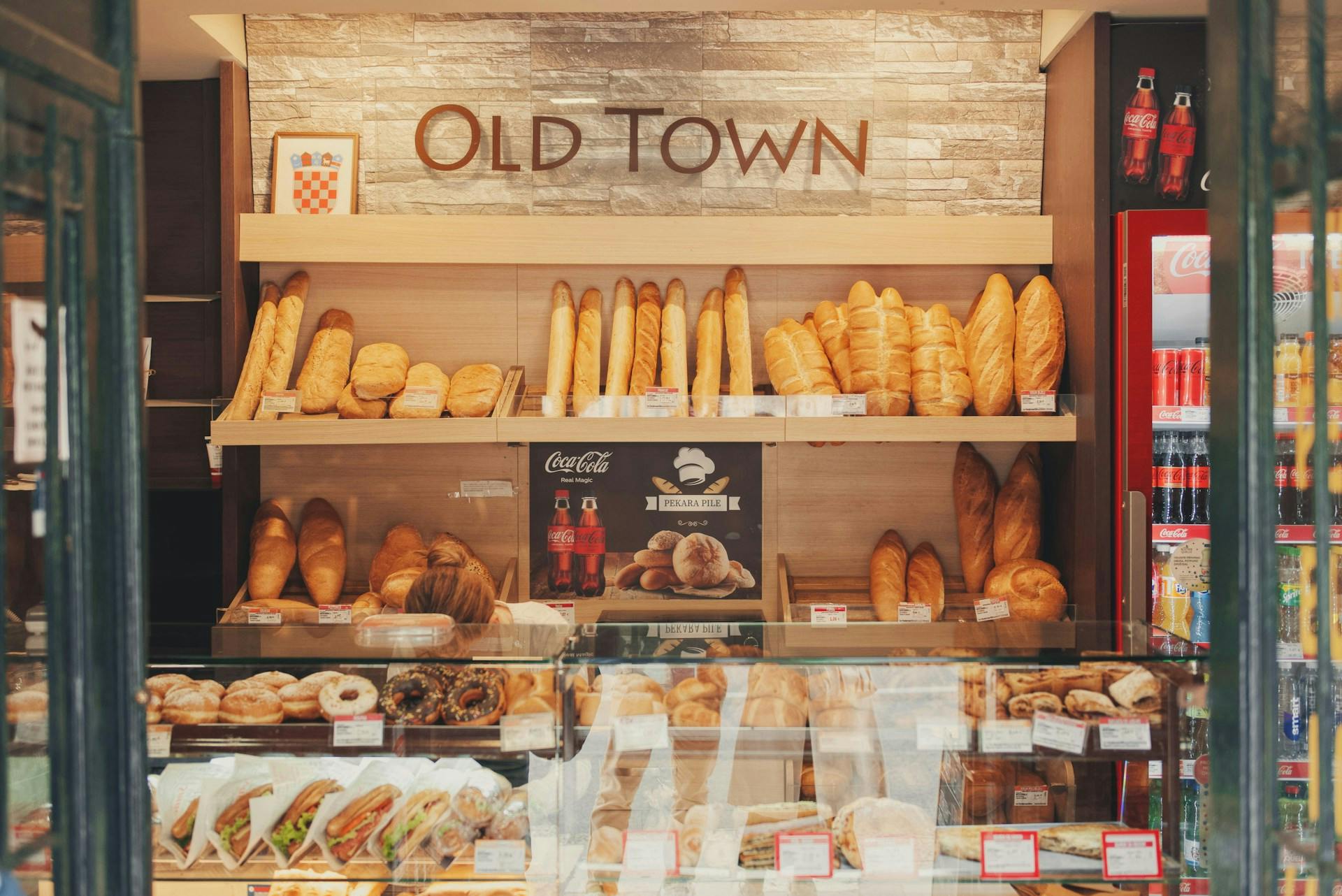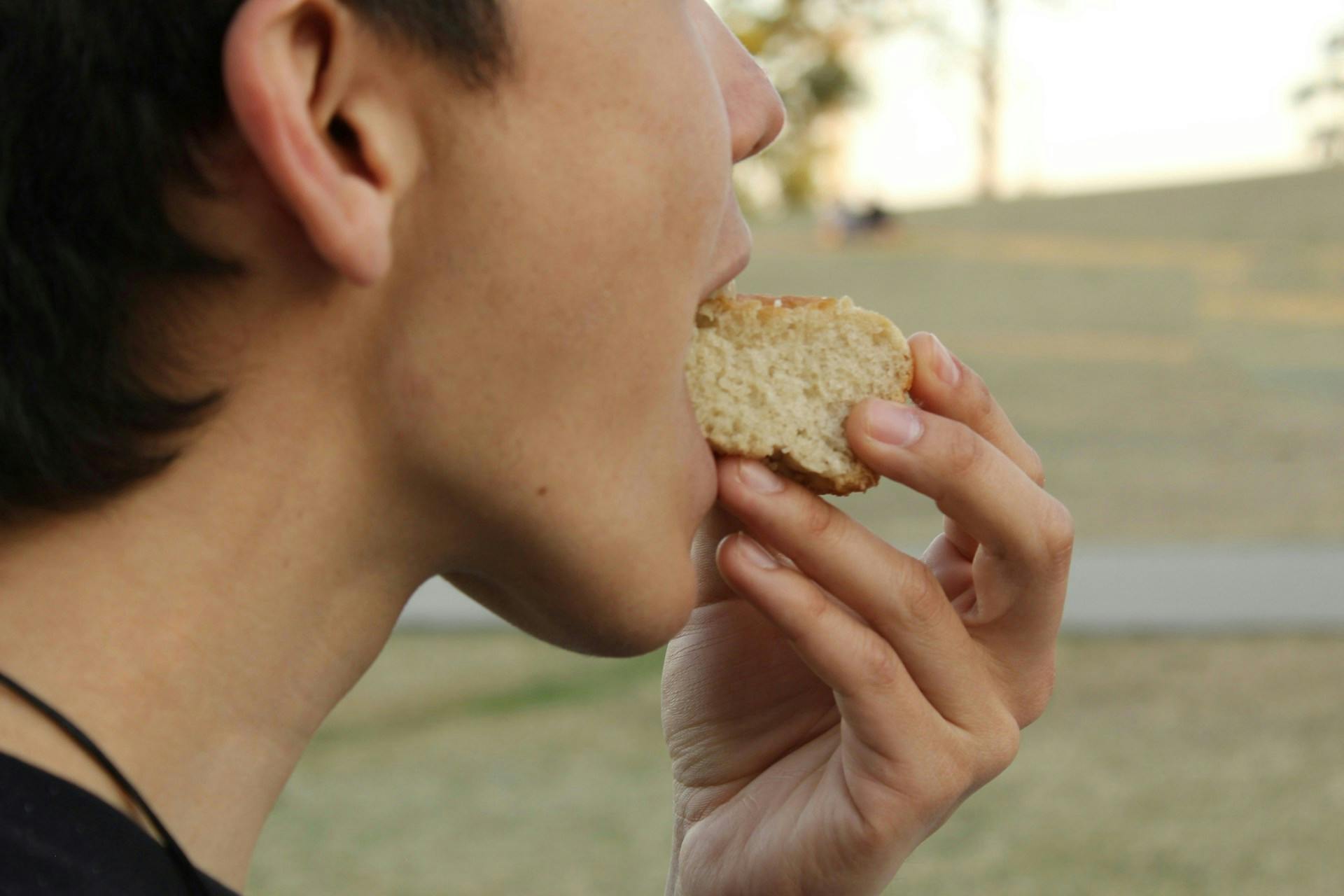Best Breads for Blood Sugar: Low-GI Options for Balanced Energy and Better Health
By Editorial Team
Reviewed by Kenya Bass, PA-C
Published Apr 16, 2025
11 min read

For many of us, bread is more than just food — it's comfort, tradition, and convenience. A warm slice of toast in the morning or a sandwich at lunch feels like second nature. But if you’re keeping an eye on your blood sugar — whether you have diabetes, prediabetes, or you're just trying to eat healthier — bread can feel like a tricky territory.
Here’s the good news: you don’t have to give up bread. You just need to make smarter choices. In this guide, we’re going to explore how different breads affect your blood sugar, what to look for when shopping, and the best options for steady energy throughout the day.
Let’s start by understanding what the glycemic index is and why it matters.
What Is the Glycemic Index and Why Does It Matter?
The glycemic index, or GI, is a scale that ranks how quickly foods that contain carbohydrates raise your blood sugar. The higher the number, the faster your blood sugar spikes after eating that food.
The GI scale goes like this:
- Low GI: 55 or less
- Medium GI: 56–69
- High GI: 70 or more
Foods with a high GI are quickly digested and absorbed. This causes a rapid rise in blood glucose, which can leave you feeling energetic for a short time, but then comes the crash. Low GI foods are digested more slowly, leading to a gradual rise in blood sugar and a longer-lasting feeling of fullness and energy.
For someone looking to manage their blood sugar — or just avoid the afternoon slump — low GI foods are the way to go. Bread, being a high-carb food, plays a significant role in how your body regulates glucose, which is why the type of bread you choose makes a huge difference.
How Bread Impacts Blood Sugar
Bread is made from grains, and grains are carbohydrates. Some are more refined than others. The more processed a grain is, the quicker it digests — and the faster your blood sugar spikes.
White bread, for example, is made from refined flour. During the milling process, the fiber-rich bran and nutrient-dense germ are removed, leaving behind mostly starch. That starch breaks down quickly in your body, acting almost like sugar.
Whole grain breads, on the other hand, retain all parts of the grain. That includes the fiber, which slows down digestion and prevents your blood sugar from jumping too quickly.
But even within “whole wheat” breads, there are major differences in how your body responds. Some may still have a relatively high GI, depending on how they’re made, what grains they use, and what other ingredients are included.
Other factors that affect a bread’s GI include:
- The type of flour used
- Whether the grain is intact or ground into fine flour
- Added sugars or sweeteners
- The presence of fiber, fat, and protein
- Fermentation methods, like in sourdough
It’s not just what the bread is made of — it’s how it’s made.
The Best Low GI Breads for Balanced Blood Sugar

Now, let’s get to the fun part: the breads that are actually good for your blood sugar.
These options are lower on the GI scale, higher in fiber, and tend to be made from whole grains, fermented ingredients, or alternative flours that digest more slowly.
1. Sourdough Bread
Sourdough isn’t just trendy — it’s science-backed. Made using a natural fermentation process involving wild yeast and bacteria, sourdough bread has a lower glycemic index than most white or whole wheat breads. The fermentation process breaks down some of the starches and makes the bread easier to digest.
Even better, sourdough can be easier on the gut, thanks to the probiotics that develop during fermentation.
However, not all sourdough is created equal. Some commercial “sourdough” breads just use vinegar for that tangy flavor and skip the long fermentation process. Look for ones that say “naturally leavened” or buy from a local bakery that does it the traditional way.
2. Sprouted Grain Bread
Sprouted grain bread, like the popular Ezekiel bread, is made from whole grains that have been allowed to sprout before being baked. Sprouting changes the grain’s structure, making nutrients more available and reducing the GI.
These breads are usually dense, hearty, and packed with fiber and protein — all good news for your blood sugar. You’ll also notice they often contain several types of grains and legumes, which further boost their nutritional profile.
3. Pumpernickel Bread
Real pumpernickel bread is made from coarsely ground rye and baked slowly over a long period. This slow cooking, combined with the low-GI rye grain, makes it a great option for blood sugar balance.
Be cautious though: many supermarket “pumpernickel” breads are just rye-flavored versions of regular bread. Look for traditional German-style pumpernickel or check the ingredients to see if whole rye or rye berries are listed first.
4. 100% Whole Grain Bread
Bread labeled “100% whole grain” means every grain used is in its whole form — nothing refined. These breads have more fiber, vitamins, and minerals than white or “wheat” breads.
Don’t be fooled by marketing terms like “multi-grain” or “wheat bread.” These often contain a mix of refined and whole grains. Always check the label — the first ingredient should say “100% whole wheat” or “whole grain [name].”
5. Low-Carb and Keto Breads
These breads are typically made with almond flour, coconut flour, or flaxseed meal instead of traditional grains. They tend to be very low in carbohydrates and high in fiber and fat, making them ideal for people managing diabetes or following a ketogenic diet.
Be mindful of additives, though. Some commercial low-carb breads contain preservatives or artificial sweeteners. If possible, go for ones with fewer ingredients and more whole-food components.
6. Rye Bread (Whole Grain)
Whole grain rye bread has a dense texture and rich flavor. Rye flour contains a type of fiber called arabinoxylan, which helps reduce the glycemic response after eating.
Look for breads labeled “100% whole rye” or “dark rye” for the best blood sugar benefits. Avoid light rye or rye breads mixed with refined wheat flour.
6. Homemade Bread with Fiber-Rich Additions
If you enjoy baking, making your own bread gives you total control. You can mix in ingredients like oats, flaxseeds, chia seeds, psyllium husk, or even cooked lentils for extra fiber and a lower GI effect.
Homemade bread also skips the preservatives and additives that can be found in store-bought loaves.
Breads to Avoid If You’re Watching Blood Sugar

Now that you know the best options, let’s talk about what to limit — or avoid altogether — if you want to keep your blood sugar steady.
White bread is the most obvious culprit. Made from refined flour, it has almost no fiber and a very high GI, often above 70.
Sweetened breads like raisin bread, brioche, or honey wheat may sound healthy, but they often contain added sugars that spike blood glucose quickly.
Many gluten-free breads also have high GIs because they rely on rice flour, potato starch, or tapioca starch, which digest quickly and lack fiber.
Even some whole wheat breads can have a surprisingly high GI depending on how finely the grains are milled or how much sugar is added.
The bottom line? Always read the ingredients. If sugar is one of the first few ingredients, or if the bread is soft, fluffy, and overly processed, it’s probably going to spike your blood sugar.
How to Eat Bread Without Spiking Your Blood Sugar
If you’re not ready to give up your daily toast, no worries. Here are some simple ways to eat bread smarter:
- Pair bread with protein or healthy fats. Adding eggs, nut butter, avocado, or hummus helps slow down digestion and reduce blood sugar spikes.
- Stick to one slice. Serving size matters. Doubling up on bread means doubling up on carbs.
- Avoid eating bread alone. Always combine it with other nutrients for better blood sugar control.
- Toast your bread. Believe it or not, toasting bread can slightly lower its glycemic response by changing the structure of its starch.
- Add fiber. Top your bread with chia seeds or include vegetables on your sandwich to increase the fiber content of your meal.
How to Shop for Bread: What to Look For on the Label
Walking down the bread aisle can feel overwhelming. So many brands, so many labels. Here’s how to simplify it.
First, don’t trust the front of the package — it’s mostly marketing. Turn it over and read the ingredient list. A good blood-sugar-friendly bread should:
- Have “whole grain” or “100% whole wheat” as the first ingredient
- Contain at least 3 grams of fiber per slice
- Have minimal added sugars (look for less than 2g per slice)
- List fewer ingredients overall
Avoid breads with “enriched wheat flour” as the first ingredient — that means it’s refined. Also, steer clear of breads with corn syrup, sugar, honey, or molasses high on the list.
Homemade Bread Tips: Bake Your Way to Better Health
Making your own bread may sound intimidating, but it doesn’t have to be. With a few simple swaps, you can create low-GI breads at home that are nutritious, delicious, and easy to make.
Use flours like almond, chickpea, oat, or whole wheat instead of refined white flour. Add fiber-rich ingredients like flaxseed meal, psyllium husk, or grated zucchini.
You can also experiment with sourdough starters, use Greek yogurt for moisture and protein, and avoid adding sugar altogether.
One benefit of baking at home is that you can portion your loaves and freeze what you don’t need, cutting down on waste and keeping healthy options on hand.
FAQs About Bread and Blood Sugar
1. Can I eat bread if I have diabetes?
Yes, but it’s important to choose low-GI breads and keep portions in check. Pairing bread with other nutrients like protein and fat also helps.
2. Is gluten-free bread better for blood sugar?
Not always. Many gluten-free breads use high-GI flours like rice or potato starch. Unless it’s made with whole grains or high-fiber ingredients, gluten-free doesn’t guarantee low-GI.
3. Is sourdough really low GI?
Sourdough made from whole grains and fermented naturally tends to have a lower GI than white bread. But it still depends on the recipe and ingredients.
4. Why does bread make me feel tired after eating?
If you're feeling sluggish or tired after eating bread, it could be due to a blood sugar spike followed by a crash. High-GI breads, like white or sweetened bread, can cause this. Choosing low-GI bread and pairing it with protein or fat can help keep your energy levels more stable.
5. Is brown bread always healthier than white bread?
Not necessarily. Some brown breads are just white bread with coloring, like molasses or caramel added. Always check the ingredient list. If the first ingredient isn’t whole grain or whole wheat flour, it may not be much better than white bread.
6. Can I eat bread every day if I’m trying to manage my blood sugar?
Yes — if you choose the right kind and watch your portions. A slice or two of low-GI, whole grain bread paired with protein or healthy fat can be part of a balanced daily diet. The key is moderation and smart pairings.
7. Is toasting bread better for blood sugar control?
Toasting bread slightly reduces its glycemic impact by altering the structure of the starch, making it a bit slower to digest. The change isn’t huge, but every little bit helps, especially if you’re already choosing low-GI bread.
8. How much bread is too much in a day?
This depends on your individual health goals, activity level, and how your body responds to carbohydrates. For most people aiming for balanced blood sugar, 1–2 slices per meal is a reasonable portion. If you’re unsure, a registered dietitian or nutritionist can help tailor a plan for you.
9. Are wraps or tortillas better than bread for blood sugar?
Not always. Some tortillas and wraps are made with refined flour and have just as many carbs, or more than regular bread. Look for whole grain or low-carb options with added fiber. As with bread, ingredients matter more than shape.
10. Can I eat bread before a workout or after one?
Yes! Bread can be a good source of energy before a workout, especially if it’s whole grain and paired with something like nut butter or banana. After exercise, pairing bread with protein (like eggs or turkey) helps with recovery. Just avoid sugary breads that cause a crash.
Conclusion: You Can Still Enjoy Bread — The Smart Way
Choosing better bread doesn’t mean cutting it out completely. With a little knowledge and some label-reading skills, you can still enjoy sandwiches, toast, and even the occasional slice of sourdough without sending your blood sugar on a rollercoaster.
Focus on low-GI, high-fiber options like sourdough, sprouted grain, and whole rye. Be mindful of portion sizes and what you pair your bread with. And when in doubt, homemade is always a safe and satisfying bet.
Eating well doesn’t mean giving up the foods you love. It just means getting smarter about how you eat them. Your body (and your energy levels) will thank you.
Share this article

Low Sodium Diet: Simple Guidelines, Food Lists, and Tips for Better Health
Lilian E.
Sep 30, 202512 min read

Does Coconut Milk Affect Blood Sugar Levels? A Complete Guide for Diabetes and Healthy Living
Karyn O.
Sep 29, 202510 min read

5 Best Bone Broths for Health, Nutrition, and Gut Support (Nutritionist-Backed Guide)
Karyn O.
Sep 24, 202511 min read

Best-in-class care is a click away
Find everything and everyone you need to reach your metabolic health goals, in one place. It all makes sense with Meto.
Join Meto